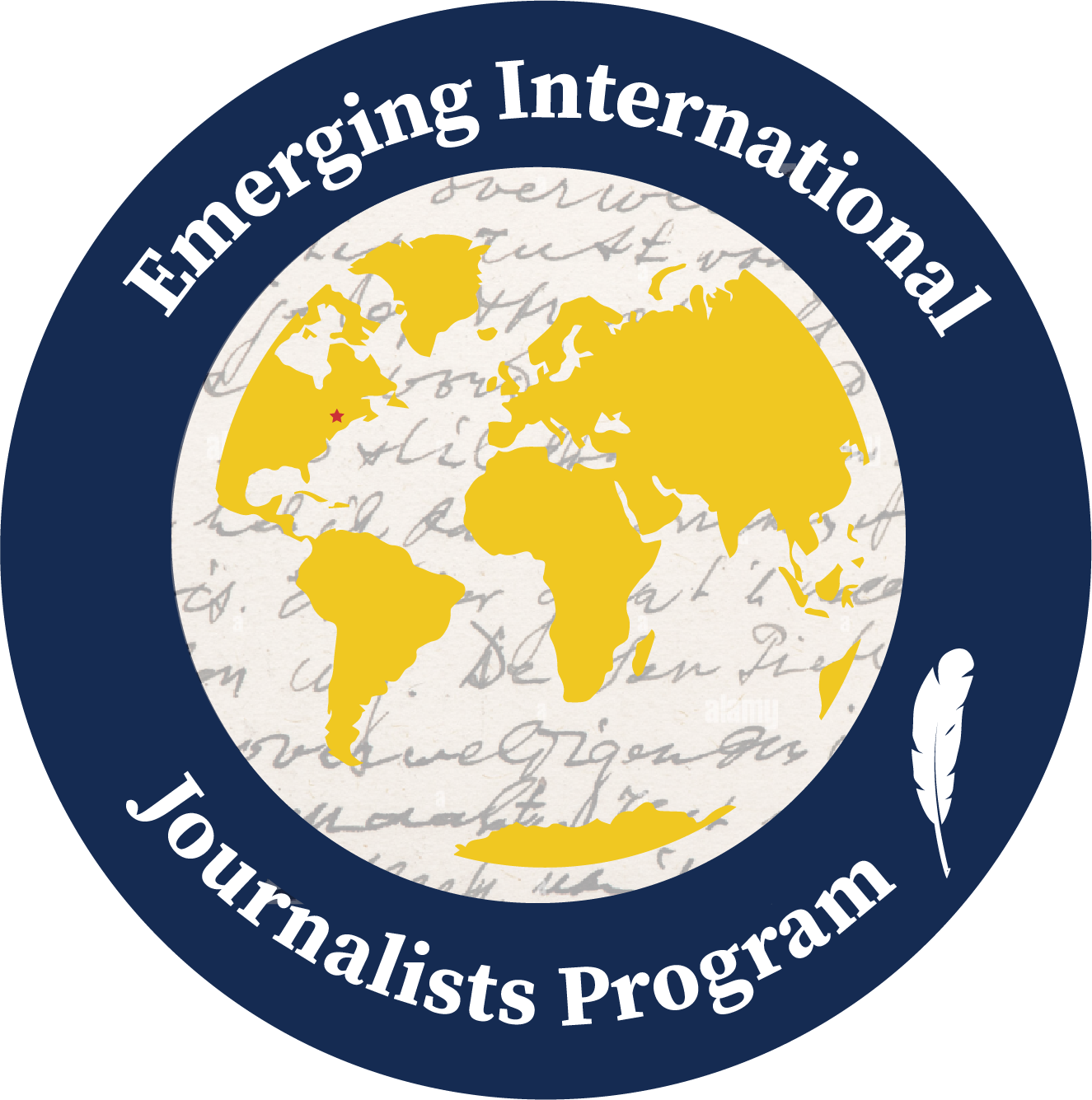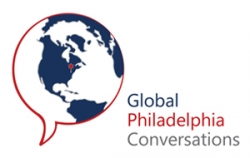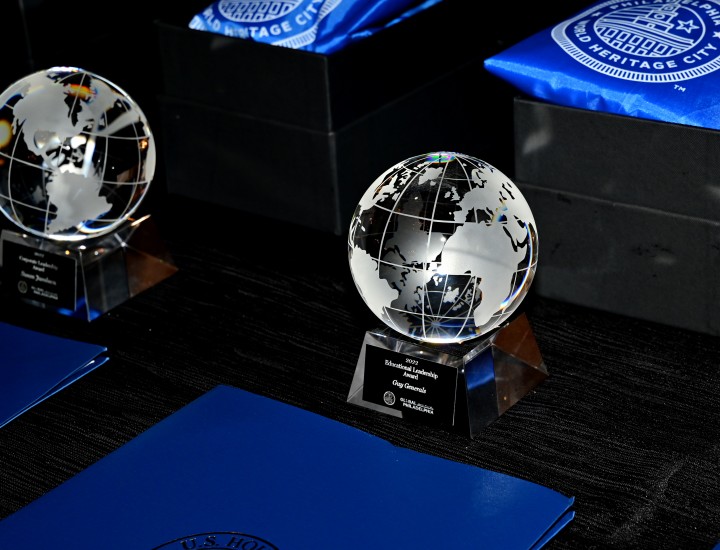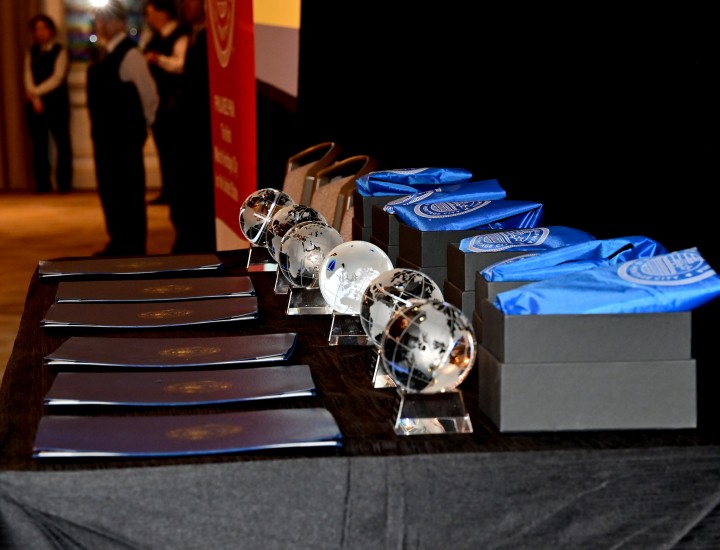A Global Conversation with Kathryn Ott Lovell
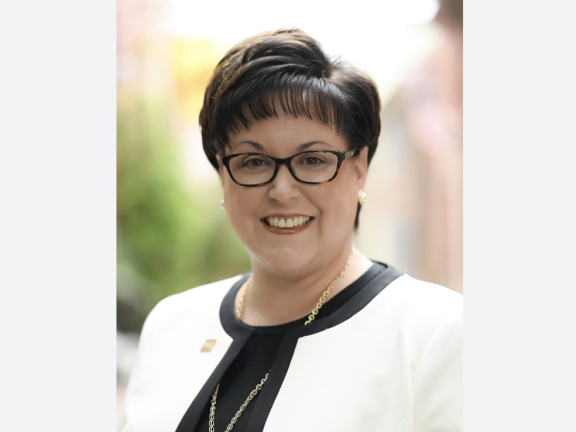
The Global Philadelphia Association is awarding Kathryn Ott Lovell with the Globy Award for Sustainable Development at this year’s Globy Awards taking place in December. As former Commissioner of Philadelphia Parks and Recreation (PPR), Lovell instituted new ideas and programs, many in the name of sustainability.
Parks and Recreation (PPR), Lovell instituted new ideas and programs, many in the name of sustainability.
After working for a nonprofit in Philadelphia called the Mural Arts Program, Lovell first got involved in parks when she was recruited by the Fairmount Parks Conservancy. She later became Commissioner of PPR during Mayor Kenney’s term. During her time at PPR, Lovell demonstrated a commitment to sustainability by introducing new initiatives ranging from playground dedications to urban forestry plans. She and her team instituted the department’s first strategic plan, which established new missions and programs in an effort to enrich communities and experiences.
In her current, relatively new position as President and CEO of the Philadelphia Visitor Center Corporation, she continues to exemplify her extensive knowledge and passion for the city by highlighting the attractions of Philadelphia and arranging educational experiences for people exploring the city. GPA journalist Madi Costigan had the opportunity to sit down with Lovell at her office in the Visitor Center in Independence National Historical Park to discuss her work and her commitment to sustainability.
You have been involved in park conservation and similar work in multiple positions. What sparked your interest in this area of work?
I was working for a nonprofit called the Mural Arts Program, which does murals all over the city, great works of public art, incredible, internationally renowned public arts program. I was recruited to run an organization called the Fairmount Park Conservancy, so that was really my first foray into the parks world. It was a really small organization when I got there; there were only three people. It grew exponentially in the five or so years I was there and that's really when I got very vested, certainly in conservation but even more so in reimagining parks.
So I think of it as less conserving parks and more really helping to reimagine parks physically but also programmatically. How do we activate parks? How do we make them more accessible and inclusive? How do we shift the narrative around parks, the power of parks, and what parks can do and mean for a city and its neighborhoods? So, I don't really think of myself necessarily as a conservationist as much as a parks promoter and advocate.
Since you were into the elements of reimagining and getting those steps to rebuilding, is that what motivated your shift to a governmental position?
When I look back on my career I sort of think of it as providence. Opportunities have presented themselves that turn out to be good places at the right time. Because I was really involved with the Fairmount Park Conservancy work, I worked really closely with the city, because we were working on their land. The city is the steward and the landlord of all parks and public spaces in Philadelphia, so we worked really closely with the city. And when Jim Kenney was elected mayor, there was a need for a new parks and recreation commissioner and he asked me and appointed me to that position, so that’s how I got started in city government. I then worked for the Kenney administration almost for his entire term.
GPA is awarding you with the Sustainable Development Globy Award. How do you feel that your work has exemplified a commitment to sustainability?
Sustainability is woven through everything we did at Philly Parks and Rec. We have a huge role to play when it comes to thinking about our urban forest and thinking about how we grow our urban forest. But what I am most proud of is we created the first urban forestry plan for the city called the Philly Tree Plan. We just finished that right before I left and that’s a huge effort, to not just manage and maintain our urban tree canopy, but also to grow it for generations to come.
We also had a really great partnership with the water department around green stormwater infrastructure, where we would do projects around capturing stormwater in parks and public spaces through tree plantings. We have a really extraordinary urban agriculture program at Parks and Rec; we did the city's first agriculture plan, which created a framework for how to invest in urban agriculture in our city both programmatically and physically by growing the landscape and offering opportunities for more urban farms and to really help to steward the network of urban farmers. We also started the first public composting program in the city, which was really fascinating and a lot of fun. We started a new program called a reforestation program, which was a huge sustainability program. We made our big events like the marathon and the Broad Street run more sustainable with different programs. We have partnered with the Office of Sustainability in the Mayor’s Office on programs and projects. It is always really front of mind, it is just part of our existence at Parks and Rec.
With all of those new plans that you’re initiating, how do you do community outreach and get the public involved?
It’s really front and center. With the Philly Tree Plan, we did a massive engagement process that started with general surveying, giving people a chance to speak their voice, but also going as far as to hire ambassadors in the communities where we have the lowest tree canopy. So for the communities that are in most need of trees, we actually hire people to become ambassadors for the Philly Tree Plan. They go out in a very grassroots fashion and engage their neighbors around what they thought about trees, to help people understand the need for trees in an urban environment, how trees relate to heat and heat vulnerability and to help people realize, sometimes in our city’s poorest neighborhoods, neighborhoods are hotter in part because of a very low tree canopy, so to really help educate people about the rewards of having trees.
GPA is committed to encouraging sustainability, especially with our current project that brings attention to the UN’s Sustainable Development Goals through art and funding that is directed to charities and organizations that coincide with these goals. A few of these goals include Clean Water and Sanitation, Affordable and Clean Energy, and Sustainable Cities and Communities. Why do you think it is important for organizations such as GPA to bring awareness to sustainable efforts?
Organizations like GPA are critical to add validity to these ideas around sustainability and the need for us to build more resilient cities, to be more resilient around the things we can do to protect our city against climate change, and to change our practices to support climate change efforts. So I think it is critical that everybody be a part of that conversation and certainly organizations like GPA, that have constituents and presence and influence, it is really critical for them to help lift up that message.
Working in Parks and Recreation involves a lot of community interaction. What have been some of your most rewarding experiences when interacting with the local communities?
Some of my favorite experiences have certainly been around when we dedicate a new park or playground, and getting to see communities’ gratitude and excitement around having that newly invested-in public space. I have loved working with youth sports teams and helping to promote youth sports as not just a fun thing to do but something that can really save young lives and change the trajectory of young people’s lives. I’ve seen how youth sports can do that, especially for young people in vulnerable communities. That has made me really enjoy being an advocate for youth sports. I love seeing the power that renovations to parks and playgrounds and recreation centers and the catalytic effect that that can have on a neighborhood and a community.
I learned that you are a new member of the Board of Directors for the National Recreation and Parks Association. Why were you interested in joining this board? How do you feel about being able to represent Philadelphia on a national level?
It’s a total honor to have joined that board. The National Recreation and Parks Association is really an extraordinary national organization that advocates for champions and connects leaders in the Parks and Recreation field throughout the country. I started to get really involved with NRPA during Covid. As someone who was leading a park system in the sixth largest city in the country, it was a scary, confusing, chaotic time for all of us. Parks and Rec, beyond the health department, was probably the most called upon city agency during Covid. Everything closed: restaurants, retail stores, schools, even churches, yet parks and trails remained open and accessible, so it became our job to make sure people were safe, to make sure that we were cleaning the places that everybody was using during Covid. We were working our tails off to serve and I think it was a critical point in time because for the first time, people saw us as an essential service.
So I say all that to say, during Covid, the president of National Parks and Recreation Association held these weekly phone calls for urban park leaders, with heads of parks from Chicago, New York, LA, Miami, Atlanta, etc. It was an incredible way to exchange information in real time, to talk about what was concerning us, what our struggles were, and to problem solve. It was this incredible resource for me to have this weekly call and we were leveraging each other’s decisions to inform your own decisions. NRPA was a pivotal leader and resource for me during Covid and that’s when I started to get really involved with them and start to understand what a great resource they are and can be for Parks and Rec organizations. But then the most exciting thing is that their national conference is coming to Philly in 2026 for the first time in probably 50 years, so that’s a big deal and I’m thrilled to be on the board at a time when that’s going to happen. 8,000 Parks and Rec officials will descend on our city for a few days.
What are some Parks and Recreation programs that you believe make Philadelphia unique?
I’m so lucky because I came from Parks and Rec. and I came to work in a building that is in a National Park. It has been a real gift for me to go from one park system to another. That is one thing that makes us unique: we have this iconic National Park in our historic area. There’s so much that sets us apart, I think it’s certainly our neighborhoods and how unique they are. It’s certainly our grit. Jason Kelce made us all proud to be underdogs but so did Rocky. We have this underdog spirit that is classic and uniquely Philadelphian that we’re so proud of and is really emblematic of our spirit here. It’s a beautiful city, it’s beautiful in its own ways, it’s beautiful in its history. Of course we have great public spaces. We're a really progressive city. In 1776, we were the birthplace of democracy, just recently we saved democracy again with the 2020 election. We have this resilient spirit that sets us apart from other places.
Your new position is in the Visitor Center, can you tell me a little bit about that?
The Visitors Center is one of the leading tourism agencies in the city, different from Visit Philadelphia and the Convention Visitors Bureau who bring people into the city. Our job is once people are here, how do we make sure they have the best experience possible? How do we do that? We have to curate the visitor experience for visitors and make sure that it is a really accessible and relevant experience for people, that whatever they’re interested in, that we can connect them to opportunities and experiences. We want to make sure that we are meeting people where they are.
We have this hub at 6th and Market, this is our biggest Visitor Center, but we recently opened a Visitor Center at the park right next to the Rocky steps, because we know from data that that is the second most visited tourist attraction. It’s about meeting people where they are, if that’s where visitors are going then we need to have a presence there and make sure we are helping them navigate the city and connect them to great experiences so that they’ll tell their friends about their great experience so that more people will come to the city. Ultimately it’s always going to be about driving more people to come and experience Philadelphia.
